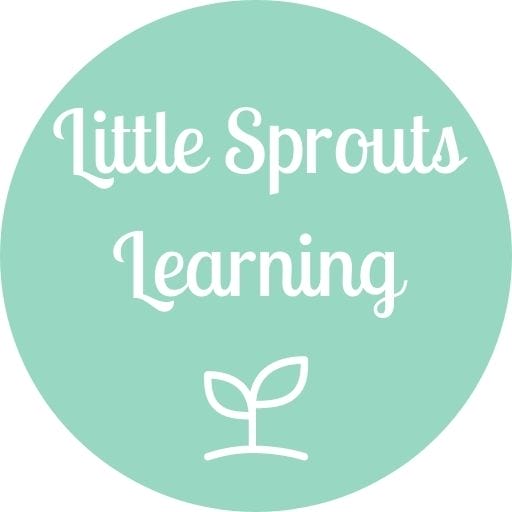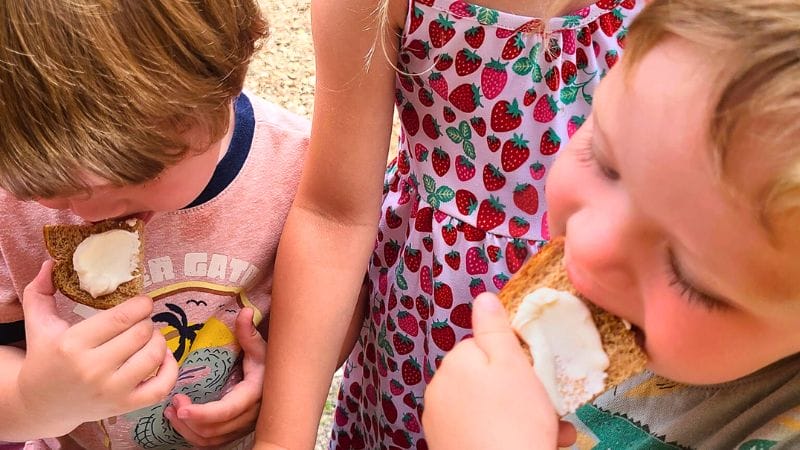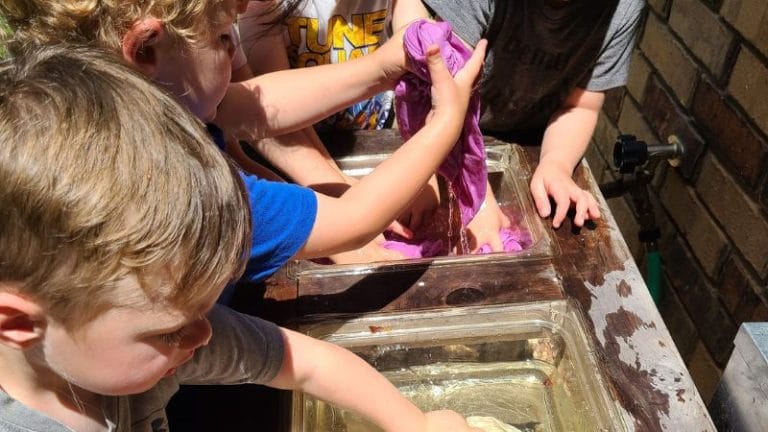Daycare Lesson Plans on “Anne of Green Gables”
This page may contain affiliate links. Learn More.
These daycare lesson plans on “Anne of Green Gables,” a beloved children’s classic by L.M. Montgomery, are designed to introduce young children to classic literature. It’s part of our home daycare curriculum series that gives enrichment activities for daycare-aged children.
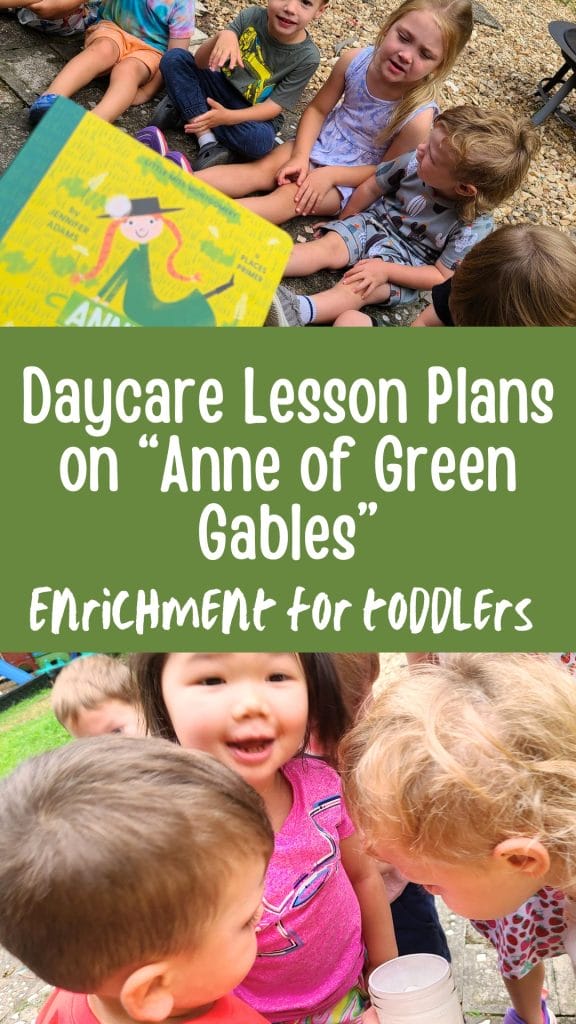
“Anne of Green Gables” is a story about the imaginative and adventurous spirit of Anne Shirley, a spirited red-haired orphan with a love for life and a knack for getting into mischief.
Using the classic novel about the story of Anne Shirley from a picture book that is age-appropriate for toddlers and preschoolers is a great way to get daily lessons for so many learning styles from the language arts. It’s also perfect for a reading celebration.
Precocious Anne inspires so many fun activities with her timeless coming-of-age story that inspires literacy development in younger readers and has a ton of benefits such as teaching vocabulary words, and more. The red-haired orphan girl Anne was a dauntless heroine created by L.M. Montgomery was an emotional child who grew into a confident young woman in the town of Avonlea. It’s a great story with many fun themes for your daycare kids to enjoy.
Through engaging activities, storytelling, and interactive play, children will explore themes of friendship, imagination, farm, garden, and the importance of home and family. These lessons foster creativity, empathy, and a love for reading in our young learners.
The study of Anne Shirley
“Anne of Green Gables” offers several valuable themes that can be adapted for preschoolers. Here are some key themes and how they can be taught:
- Imagination and Creativity
- Perseverance and Positivity
- Appreciation of Nature
- Identity and Self-Confidence
- Family and Home
- Gardening
- Farm
- Friendship
By exploring these themes, preschoolers can learn important life lessons in a fun and engaging way.
Classic literature for toddlers and preschoolers
Classic literature offers numerous benefits when introduced to toddlers and preschoolers, fostering their development in various ways. Here are some reasons why classic literature is valuable for young children:
1. Rich Language Exposure
- Classic stories often contain rich, descriptive language that helps expand children’s vocabulary.
- Listening to well-written prose enhances children’s understanding of sentence structure and storytelling techniques.
2. Cultural Literacy
- Classic literature introduces children to culturally significant stories, characters, and themes, helping them understand and appreciate their literary heritage.
- Familiarity with classic stories creates a common ground for future learning and social interactions. You are already building pathways for future learning of amazing concepts for kids. They might not get the whole story, but they will recognize the themes when it’s reintroduced in later life.
3. Moral Lessons and Values
- Many classic stories impart timeless moral lessons, such as kindness, honesty, and perseverance.
- Characters in classic literature often serve as positive role models, demonstrating virtues and ethical behavior.
4. Imagination and Creativity
- Classic tales with fantastical elements and imaginative settings inspire creativity and imaginative play in young children.
- Exposure to classic literature encourages children to create their own stories, drawings, and pretend play scenarios.
5. Emotional Development
- Engaging with classic stories allows children to experience different emotions and perspectives, fostering empathy and emotional intelligence.
- Familiar and beloved stories provide comfort and a sense of security, especially when shared as part of a routine.
6. Cognitive Development
- Listening to and discussing stories enhances comprehension and critical thinking skills.
- Repeated exposure to classic tales helps improve memory and attention span as children recall and anticipate story events.
- Reading classic literature together provides a bonding experience between caregivers and children, promoting a love of reading and shared learning.
- Introducing children to the stories you loved as a child creates a sense of tradition and continuity.
Inspiring young readers
By incorporating classic literature into early childhood education, caregivers can provide a rich, multi-faceted learning experience that supports linguistic, cognitive, emotional, and social development. And we all know that social skills indicate future success.
Inspiring kids to read is an important part of running a home daycare. We are laying the foundation for future learning.
Daycare lesson plans
There are so many great daycare lesson plans for home daycare providers to use. Having an idea of what activities you are going to do ahead of time helps providers stay on track with learning goals and objectives.
For a printable version of this lesson plan that includes a supply list and the Oklahoma ELG’s, check out our Anne of Green Gables listing on Etsy.
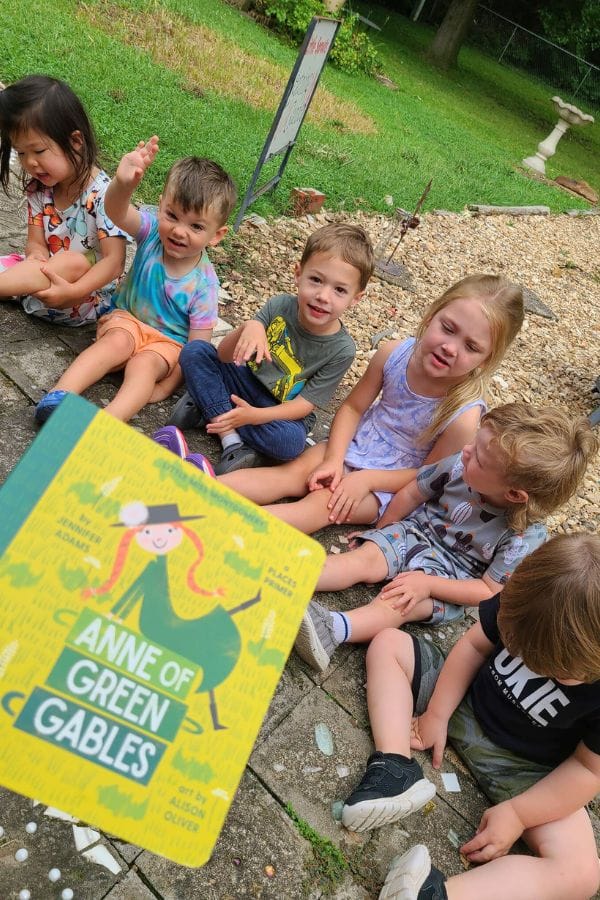
Anne of Green Gables study unit
Creating a study unit for “Anne of Green Gables” for 3-4-year-olds can be a fun and enriching experience, though the novel itself is more suitable for older children. For this age group, we’ll focus on the themes, characters, and settings in a simplified manner. Here’s a structured plan with activities and lessons:
For every lesson I teach on classic literature, I start with a book. I love these Babylit books that take classic literature and make it into toddler books. This version of “Anne of Green Gables” explores the different areas that Anne explored in the novel.
Introduction to Anne:
- Read the book and talk about Anne and her friends.
- Talk about who Anne is, her red hair, and her imaginative nature.
- Discuss all of the cool places that are mentioned in the book.
- Make red-haired Anne paper dolls.
Green Gables and Nature:
- Show pictures of Green Gables (the house, gardens, trees).
- Talk about Anne’s love for nature.
- Take a nature walk to collect leaves, flowers, and rocks.
- Create a collage with the collected items.
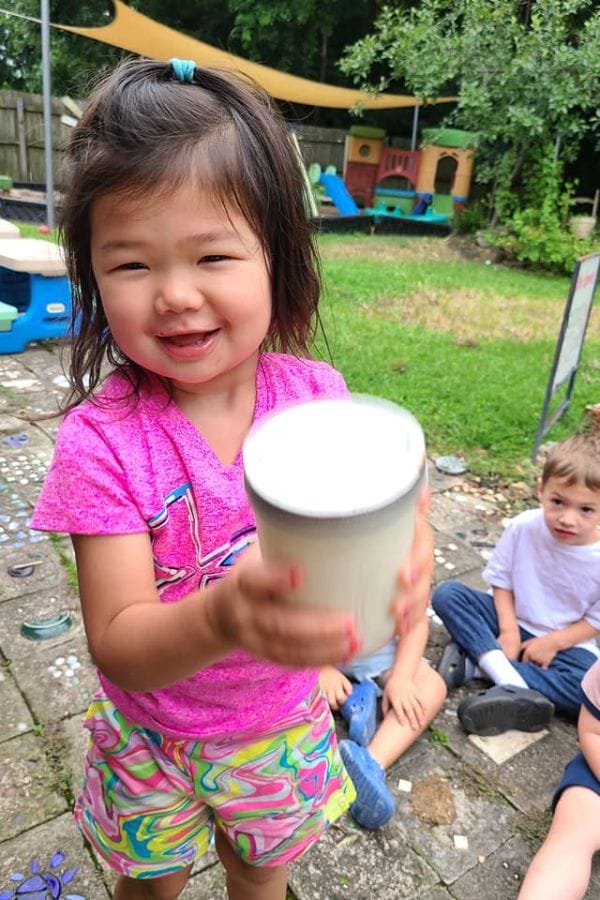
Life on a Farm:
- Talk about life on a farm.
- Discuss the purpose of animals on the farm.
- Talk about chickens laying eggs and animals for meat and milk.
- Pour some heavy cream into a jar and let the kids shake it until it turns into butter.
- Discuss how people made their own butter with a churn. Show a picture or have a real churn for kids to try.
- Try the butter on a piece of toast.
- If you have farm toys, use them for your free play time to tie the farm theme in even more.

Meeting Friends:
- Tell a simplified story or watch a short animated adaptation of Anne meeting Diana.
- Talk about friendship and how Anne made friends.
- Act out meeting a new friend and playing together.
- Give the kids strings or pipe cleaners and beads and let them make friendship bracelets to exchange.
Acts of Kindness:
- Discuss times when Anne did something kind.
- Share times when the children have been kind.
- Make a “Kindness Tree” where each leaf has a kind act written or drawn on it. You could make a large tree on the wall with twisted paper sacks, or a small tree cut out of construction paper and glued to another sheet, or just draw a trunk. Cut out leaves and write acts of kindness for the kids on each leaf and let them glue them on.
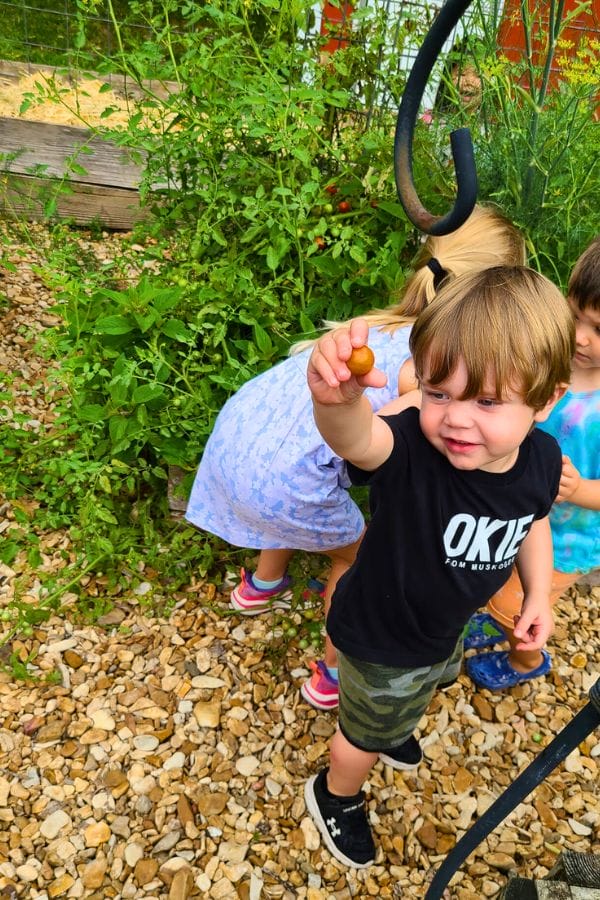
Gardening:
- If you have a garden, get the kids in it and plant or harvest something.
- Talk about how gardening was important for everyday life in Anne’s time.
- If you don’t have a garden, let the kids plant a pinto bean in a paper cup and watch it grow.
Imaginative Play:
- Provide dress-up clothes and props to let the children play pretend.
- Talk about how Anne used her imagination to create fun stories.
- Encourage children to tell their own imaginative stories.
Art and Creativity:
- Make flower crowns or nature bracelets.
- Take kids outside and help them pick dandelions or other flowers and tie them into strings to make the flowers.
Nature Sounds:
- Listen to recordings of birds, wind, and water.
- Talk about the sounds and how they make the children feel.
By focusing on these themes and activities, you can create an engaging and educational unit for young children that introduces them to the world of Anne of Green Gables in a way that’s accessible and enjoyable for their age group.
Try this Best Classic Literature Themed Tea Party for Daycare too! But don’t get the wrong drink from the cupboard!
Parent Involvement
For even more learning from “Anne of Green Gables” here is a take home lesson plan for parent involvement.
- Send home nature scavenger hunts or coloring pages.
- Encourage parents to talk about the themes of nature and friendship with their children.
For more ideas for enrichment curriculum ideas for daycare, check these out:
- Daycare Lesson Plans on “The Secret Garden”
- Daycare Lesson Plans on Picasso
- Daycare Lesson Plans on Irish Culture
- Daycare Lesson Plans on “Goodnight Moon”
- Daycare Lesson Plans on Shakespeare
- Daycare Lesson Plans on Huck Finn
- Daycare Lesson Plans on Frida Kahlo
- Daycare Lesson Plans on Jackson Pollock
- Daycare Lesson Plans on Wuthering Heights
- Daycare Lesson Plans on “The Very Busy Spider”
Here are a ton more helpful printables you can get to make your business easier!
And more helpful tools for providers here. I wish I would have had access to these years ago, they are such a blessing!
